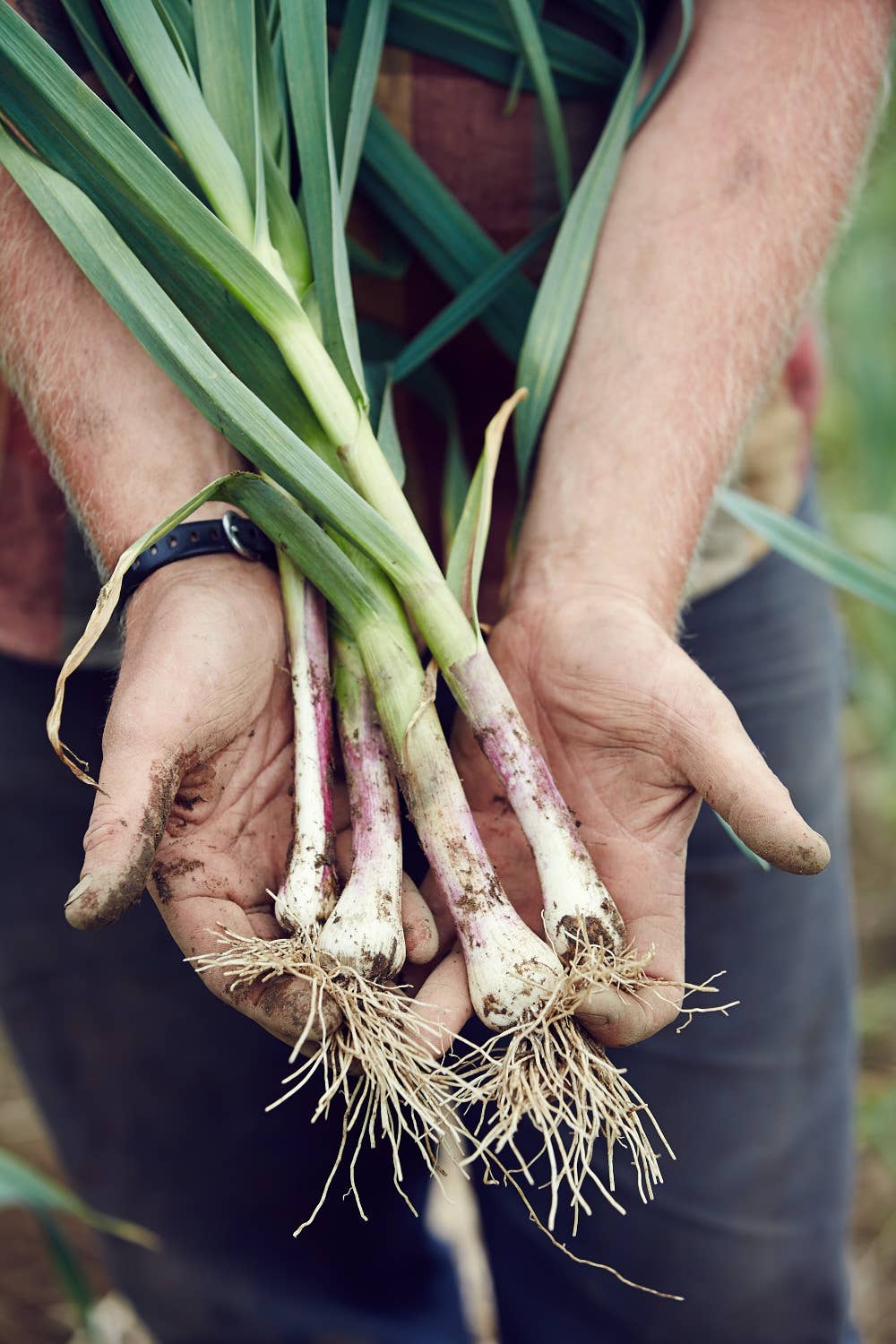
Home Grown
The children of Maine’s Back to the Land farming pioneers are choosing to stay right where their parents put them
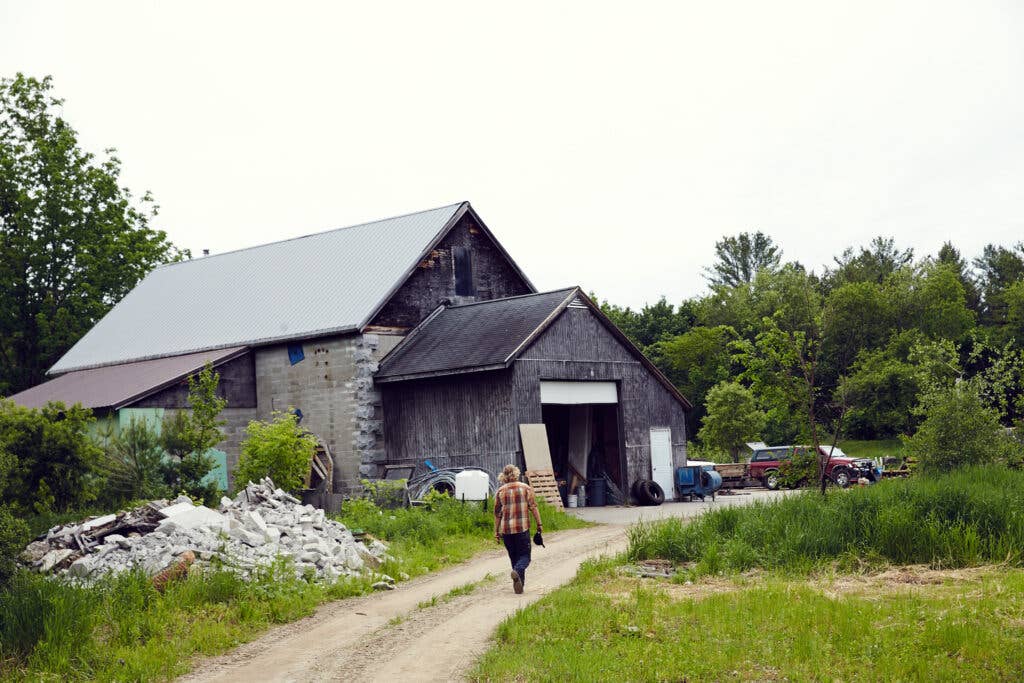
I’m in Maine, on a winding road that crosses the Cathance River and swoops up toward fewer and fewer homes, more land, more “middle of nowhere,” as some would say. It’s the end of May, the river is high and the tall grass around Whatley Farm is flecked with wild flowers. I’ve been here before, to eat my friend Ben’s food and to hear his family and friends play music, but I’ve never ventured down the narrow road behind the barn to see the acres of beds that have kept him so relentlessly busy the years I’ve known him, perpetually bone-tired and sun-burned but twinkly-eyed, always entertaining an impossible number of projects at once, it seems.
Now, here they are: the thousands of plants arranged so neatly, the greens sprouting so sweet (and mustardy, and citrusy, and spicy) despite too many variables to count: It was a cold winter; warm weather plants did not fare well in general and some won’t arrive at all. Most farmers in Maine will take a hit. Most farmers in Maine are always taking some kind of hit. The soil here can be needy, the dark months harsh.
But this is a hopeful place to farm, too. An original outpost of the organic movement, Maine is home to pioneers of the nation-wide "Back to the Land" phenomenon of the 1960s and '70s, including the homesteaders Scott and Helen Nearing and Eliot Coleman—co-authors of The Good Life, and author of The New Organic Grower, books you'll find worn with use on many shelves across the state. Around this time Maine became a refuge for young men and women like Ben's parents, looking to abandon their urban and suburban upbringings and lead more sustainable lives in rural corners of the country, to grow food for their families and their neighbors. Originally formed in 1971, the Maine Organic Farmers and Gardeners Association (MOFGA) has grown to become the largest organization of its kind in the country, which is evidence of the passion and dedication of the movement's Maine contingent.

As the rest of us get a taste for the benefits of eating local and organic, and small-scale farms start to become more viable, some of the sons and daughters of Maine’s Back to the Landers are staying put—literally on the land where they grew up—and dedicating themselves to small-scale farming with renewed vigor, despite the hardships they witnessed growing up, as many of their parents had to give up farming to make ends meet. “Stay on the Landers,” they sometimes call themselves—these kids, like Ben, who are following through on their parents’ dormant dreams, doing tough, rich work that doesn’t make a lot of money.
In the far corner of the field I see Ben and his girlfriend Ailish, tan before June, at work planting cucumbers beneath a cloud-cluttered sky. Months from now, sweet, crunchy discs of those fresh vegetables will cool salads on warm summer days, but today, the plants are still in their infancy. We talk of the greens Ben grows—less common varieties like puntarelle, Belgian endive, sugarloaf chicory, and shiso. Shoppers unfamiliar with these greens are often given Whatley-approved recipes and cooking tips with their purchases, but local chefs are excited at a glance, and the Whatley Farm stand often inspires the restaurant specials appearing on chalkboards in the nearby town of Brunswick just hours after the market's close. I’ve enjoyed bowlfuls of zesty greens lightly dressed, but it’s different to eat them straight from the gardens. On my visit, Ailish and I invent an unofficial tasting tour for ourselves, wandering around the beds, trying and describing the bold flavors or just enjoying them in silence. Ben’s mom, Laura, is at the edge of the woods with a basket held to her hip, collecting stinging nettles they'll sell at the farmer's market the next day. This is precisely the picture I've come to behold: two generations of Whatleys at work on fields that, before Ben came back home, hadn’t seen much action for decades.
In 1982, Laura and her husband Nick purchased a rundown 40-acre chicken farm in Topsham, about 45 minutes from Portland, for $40,000. With help from MOFGA—the organization dedicated to supporting organic growers through a wide variety of programming, from apprenticeship opportunities for those starting out to workshops for established farmers—and the many friends they made through the organization, the Whatleys made a go at organic farming, selling primarily vegetables and eggs. But after their sons Ben and Dan were born, their careers took a more stable turn toward the masonry business and the farm shrunk into a robust family garden. Theirs is a unique twist on a classic farm story of the time: There simply weren't enough people willing to pay what local, organic food is worth. The famers' markets were full of old growers stuck in their ways, selling tomatoes at pennies per pound well into the 1980s. Still, Nick and Laura embraced homesteading, and maintained connections with MOFGA as it bloomed. It’s difficult to understate the impact the organization has made on the state, drawing more and more people interested in home gardening and fresh food to Maine, chefs included.
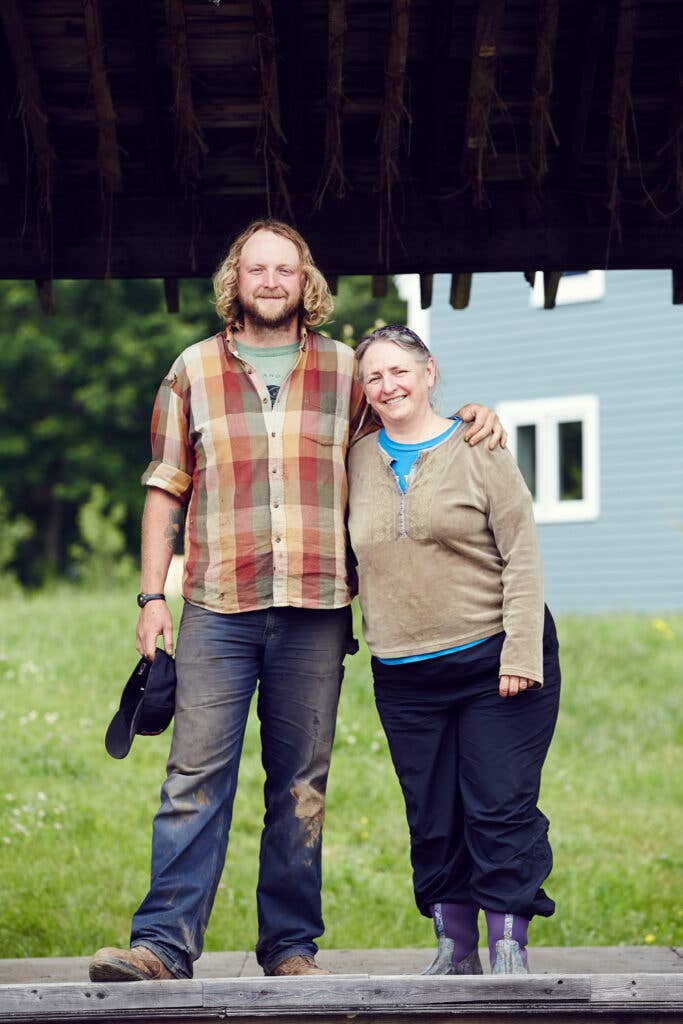
More recently, the city of Portland and outstanding restaurants dotting the coast have garnered world-wide acclaim for serving updated versions of the kind of simple, beautiful food that has been commonplace in homesteaders’ kitchens across the state for decades now. Fresh beans boiled to their brightest green, seasoned and served. Buttery turnips à la Alice Waters and pork fat so many ways, flavoring food just pulled from the ground. Chefs are inspired by the straight-forward flavors farm kids grew up on, and old Mainers too—salty men and women whose eyes grow distant at the farmer's market when Ben mentions sorrel. “There was this soup my mother made…” a man trailed off the other day.
As a boy, Ben didn't entertain thoughts of farming. After graduating from college, he began studying for the LSATs, but that was back in 2007, and considering how few job opportunities and how much market instability there was at the time, Ben decided to take on the inevitable risk pursuing the career he was most excited about and challenged by—farming. “I like being my own boss,” he tells me in the door of the greenhouse where he has elaborate plans for growing tomatoes. “I like being in partnership with my family, and living a local life. I like that there’s a tangible purpose to what we’re doing. I’m convinced that this is the hardest thing that I could have chosen to do.” Committed to his decision, Ben apprenticed around the state before he began, with the help of his parents, to bring Whatley Farm to life again. Today, he's ended up exactly where he wants to be, a stone's throw from his childhood bedroom, picking up where his parents left off at a moment when more and more people are looking to buy what the Whatleys have always been selling.
Seth and Tyler Yentes of North Branch Farm in Monroe, Maine, are also the sons of homesteaders. Their stepfather, Jonathan Fulford, was a farmer for years before committing himself to carpentry work to pay the bills. At 28, though, Seth has been growing whatever he can whenever he can for over half his life, since he was 13 and Jonathan taught him how to graft fruit trees. “All through high school, I was clearing land to plant fruit trees, grafting fruit trees, gardening on a pretty good size scale,” he says. Around that time, his mother showed him and his brother an article about the social and environmental benefits of localizing food systems well before the concept became widespread. It got him thinking, he tells me, about the kind of legacy he wanted to leave, the sort of impact he wanted to make on the earth and his community. Like Ben, Seth Yentes’ decision to farm is a political one. But above all else it seems personal: This is the work he wants to do, the life he wants to live. His interest in the science and the simple pleasure of eating food he has grown himself remains a powerful motivator, and there is evidence of this undiminished excitement in his voice when he speaks of eating the apples fruiting from trees he planted over a decade ago, of all the local vintage varieties that don’t grow quite so well—or taste so good—outside of Waldo County.
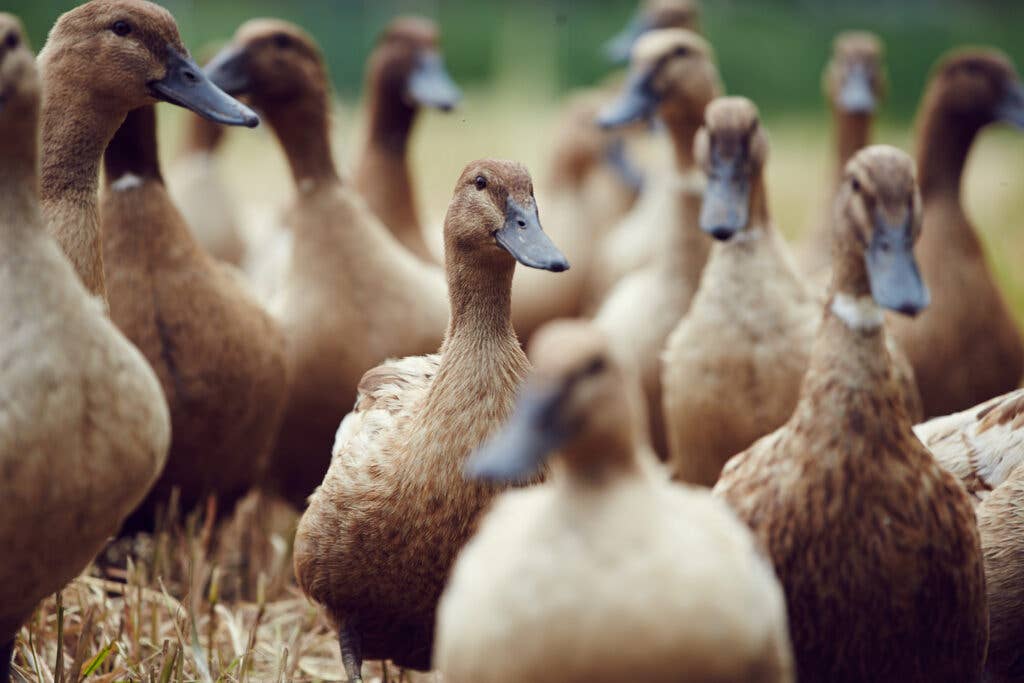
We’re standing among half a dozen neighbors who have come by to admire the newborn calves roaming the pens. We’re looking out over a wide field, a thick strip of woods, the rolling hills of farm country cresting over the tree line, glowing blue. Behind us, Seth’s partner Anna Shapley-Quinn sits on a stoop, chatting and cuddling with their three-year-old daughter, Ada. In fading light, his mother is making her way down a rough path toward the orchard, and the thousands of trees that came of the first few her son planted as a boy.
In 2009, the brothers, along with Anna and Tyler’s partner Elsie Gawler, went in together on the practically defunct dairy farm just three miles away from where they grew up. Pooling all their passion and resources, they set about building a family business run largely on horse power. (I see the Percheron mares, sisters named for their birth months April and May, snorting and pawing in the distance.) Although they’re all under 30, this group has been farming on 330-acre North Branch Farm for almost five years now. North Branch has created a niche for itself in the winter produce market, selling to friends and neighbors and revered midcoast Maine restaurants like Salt Water Farm Café and Shepherd’s Pie at a time of year when local produce can be harder to come by.
Seth oversees the expansive orchards, including the trees growing more haphazardly around the house (Anna’s from North Carolina, and Seth tries to grow her as many Maine peaches as her southern heart desires), and Tyler and Elsie manage the draft horses, dairy, and grass-fed operations. At the moment, Ada has a handle on the chickens—literally, there is almost always one peeking out from between her tiny fingers during my visit.
While we’re talking, another calf appears in a distant field, suddenly born from one of the best-producing Jerseys. Tyler jogs to catch up to the scene. “A girl,” he yells back to us, and Seth gives a whoop. She is the sixth female calf born this spring. These are the kinds of outcomes that can make or break a year on the farm, and the promise of more milk is especially exciting now, as Elsie begins to make North Branch cheese with the guidance of a mentor through MOFGA’s Journeypersons Farm Training Programs. She has spoken with local restaurants and shops. Hard, sharp cheese is what they’re after, so that’s what Elsie plans to make.
Returning from a tour of the orchards, the air has cooled and the sunset burns like a tired bonfire over the hills. Seth and I pick asparagus on the way back to the house for dinner, filling a basket and eating as we go. This home garden needs tending, Seth says with a shake of the head. The to-do list is endless, the equipment almost always in need of fixing. A collection of old parts, often picked up at a good price from the side of the road, is scattered throughout the yard. Regardless, the stalks of asparagus are big and crunchy, watery and flavorful, and I think it would be a shame to have them any other way until Anna serves them lightly steamed with a hunk of farm butter, and a squeeze of lemon.
Anna admitted to me that the food is one of the things she loves most about farming, and proof of her knowledge and adoration is in one of the tastiest meals I have ever eaten. We sit down to a chicken Anna has roasted to a perfect golden brown, with skin so crisp it offers a salty crackle when we bite into it. We have some of winter’s last carrots from the cellar, creamed corn with herbs, and butter lettuce with hard-boiled eggs, sprinkled with apple-smoked bacon—all from the farm. Even the vinegar in the dressing is made of pressed North Branch apples.
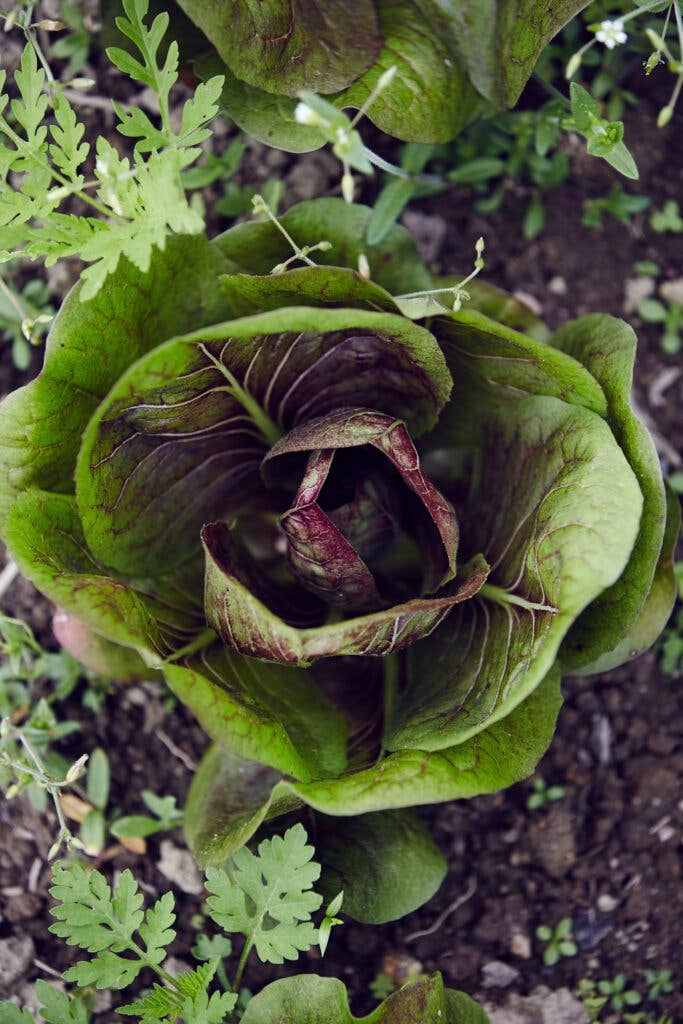
As we eat, the brothers notice the neighbors slowing down as they pass. “They like to check in on us,” Seth tells me. “See what we’re up to, how we’re doing. I think they’re kind of proud. They like that we’re from here.”
On harvest days, extended family and neighbors will help out, and the boys’ stepfather and mother are still very much involved. Anna’s parents have built a home on the land. Once, a couple of years ago, Ben brought up a crew of friends to plant part of the orchard alongside Seth, Anna, Tyler, and Elsie. The group was rewarded with their own memorable North Branch meal. The children of Maine homesteaders, the Whatley and Yentes brothers played together as kids at various gatherings their parents attended. These days, despite some distance between them and a lot of long hard days at work at home, they try to help each other out when they can. Like their parents, they are in it together, now for the second time around.
After dinner, Elsie pours a thick, white cream and maple syrup concoction into a frosted Donvier ice cream maker, and as we talk we take turns cranking as it hardens. Scooping up big cold spoonfuls of thick ice cream topped with blueberries and some of those precious peaches, we decide to name the new cow Clementine. Ada, potentially the third generation of Monroe growers, reappears with a chick in the pocket of her vest. “Be gentle, Ada,” Seth tells her, and Anna replies: “I think she knows." The sky darkens. It is time for me to go. These guys, though, they will stay put.
Sophie Nelson is a contributing writer for Maine and Maine Home+Design magazines and a fiction student in the Stonecoast MFA program.
Keep Reading
Continue to Next Story










